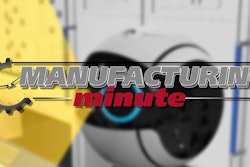Drone use has become increasingly popular in the public sector. Many use the current generation of drones to take breathtaking photos and videos, and there is also an emerging segment using drones for racing.
It appears the next phase in the evolution of drones will be putting them to work. Numerous companies, including Amazon, have floated the idea of using drones to deliver some products to homes. Drones are also increasingly used in farming as well as search-and-rescue efforts.
The next step could be fleets of drone painters that autonomously paint houses and other large structures. Drone company, Apellix, is testing a new line of painter drones it hopes to unveil commercially later this year. Here is a quick look at how these drones work and what they could mean to the painting industry.
Meet The Apellix Worker Bee
Apellix calls its painting drone the Worker Bee and describes it as a tethered model made to paint large-scale vertical surfaces. The company says it is in the midst of conducting studies on feasibility. Right now, the Apellix Worker Bee is available to lease for “industry partners who participated in the development.” Apellix “expect(s) to begin leasing to commercial and industrial users over the course of 2018.” One thing is for certain, this drone will bring positive disruption to the industrial sector.
A Worker Bee prototype was built using a quad-copter drone, which got its paint from an umbilical cord-like hose that tethers the device to the ground. The goal is to create a drone that would be used to paint large, flat surfaces, such as skyscrapers or ships. At this point, the prototype models can only paint buildings up to three stories high.
Why Drones Make Sense
The prospect of painter drones puts the painting industry in a bit of a conundrum. On the one hand, Apellix says the drones are all about safety. They would eliminate the need for scaffolding and would reduce the inherent risk that comes with teams of people climbing the sides of tall buildings or dangling from the side of a massive ship.
There are other safety benefits as well. The company says similar drones could handle tasks such as fumigating ships or de-icing aircraft, which would limit the possibility of human workers breathing the toxic chemicals used in those processes.
On the other hand, if drones handle the bulk of the painting labor, it would undoubtedly lead to some job losses. Sure, humans are still required to set things up and monitor progress, but the teams of 20 or 30 painters needed for big jobs would be gone.
What It Means For The Industry
You can begin to see how painter drones could have both positive and negative effects on the painting industry. Improved safety is always a good thing, and an efficient machine-based painting process could also boost production levels.
While job losses may be in the cards for a few, the benefits far outweigh the loss. Not to mention, the rise of painter drones wouldn’t eliminate the need for humans in these industries. Human eyes would be required to make sure the job is done correctly, making sure the paint is properly mixed, and managing the robotic fleet.
Further, painter drones may also create new jobs, such as drone and equipment manufacturing and the development of software needed to make the machines as accurate and efficient as possible.
Whether those jobs would be enough to offset the inevitable cuts in painting jobs remains to be seen. What is known, though, is that painter drones are coming. It could be years before they become the norm or even a significant part of the painting industry, but the future is near, and the industry should be sure to pay attention.
Megan Ray Nichols is a freelance science writer.






















